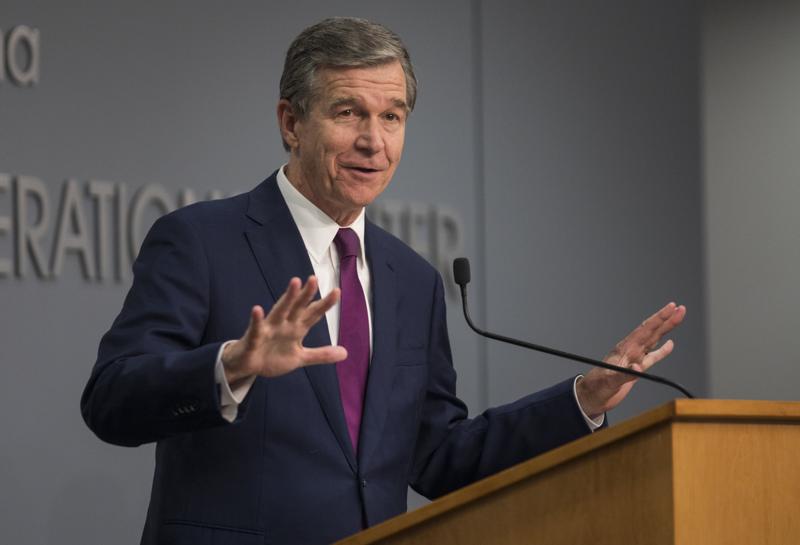
RALEIGH, N.C. (AP) — The number of North Carolinians in the hospital due to COVID-19 has doubled in the last two weeks, the 14-day rolling average of new daily cases has increased by nearly 200% and the share of tests coming back positive is at its highest level in more than five months.
The latest figures North Carolina health officials released on Monday send a clear message that the pandemic is not going away and that peoples’ continued refusal to come in for vaccines that are free, widely available, safe and highly effective is only exacerbating the problem.
But at a time when nearly all available metrics are skyrocketing to their worst levels in months amid the spread of the more contagious delta variant, the state appears unlikely to implement new restrictions. It is instead moving forward with plans to eliminate its statewide mask mandate and ease masking guidelines for high school students starting on Friday.
“Most all of the people getting sick and dying now are unvaccinated and that is why the governor is pulling out all the stops to get as many people as possible to get their shots,” said Mary Scott Winstead, a spokeswoman for Democratic Gov. Roy Cooper. “Although the governor is not yet planning any additional statewide measures at this time, he strongly encourages schools and businesses to enact important safety precautions that can save lives and he continues to encourage unvaccinated people to wear masks until they get their shots.”
The pace of vaccinations has held steady over the past month, with about 40,000 residents coming in for a first dose on any given week. About 94% of cases and deaths reported between May 6 and July 11 have been among people not fully vaccinated, according to state health officials.
On Saturday, more than 2,000 North Carolinians were reported to have tested positive for COVID-19, the worst single-day case count since April 30. Nearly 950 residents are currently hospitalized, the highest number since May 10.
The share of tests coming back positive is also at its worst levels since Feb. 7. Nearly 9% of tests came back positive on Sunday, up substantially from a month ago when the state reported a positivity rate below 2%.
The state health department last week identified 13 counties where COVID-19 is spreading the most. Richmond County, which borders South Carolina and has seen 1 in 254 residents test positive for the virus in the last two weeks, is the only one of North Carolina’s 100 counties state health officials declared as having “critical” transmission levels.
Cherokee, Chowan, Cleveland, Cumberland, Graham, Hoke, Lee, Onslow, Pender, Pitt, Rutherford and Sampson Counties are seeing “substantial” spread.
One in every 1,147 people in North Carolina tested positive in the past week.
“Throughout this pandemic, NCDHHS has continued to provide guidance and make decisions based on our data and trends,” the state health department said in a statement. “NCDHHS continues to urge unvaccinated people to follow CDC and NCDHHS guidance and wear a mask indoors. Everyone, regardless of vaccine status, should still wear a mask in certain places such as public transportation and healthcare facilities.”
Updated school reopening guidance from Cooper’s administration allows districts to carry out their own masking requirements, though the state recommends unvaccinated high school students and all K-8 pupils wear a face covering while indoors. The decision has prompted criticism from the state’s largest lobbying group for teachers.
“In the face of dramatically rising COVID infections among unvaccinated North Carolinians in the past several weeks due to the delta variant and schools preparing to open for the new school year, this seems a very poorly timed decision,” said a statement from Tamika Walker Kelly, president of the North Carolina Association of Educators.
State Rep. Ashton Clemmons, a Guilford County Democrat, has three elementary school kids and is concerned some districts won’t follow the state’s masking recommendations. Still, she is comforted by studies that have shown it’s safe for kids to return in person under less stringent conditions than they had been in during the spring.
“We still all have the responsibility, particularly for our children, to stay safe, to get vaccinated if you’re not, and if you are not (vaccinated), to wear masks,” Clemmons said in an interview.